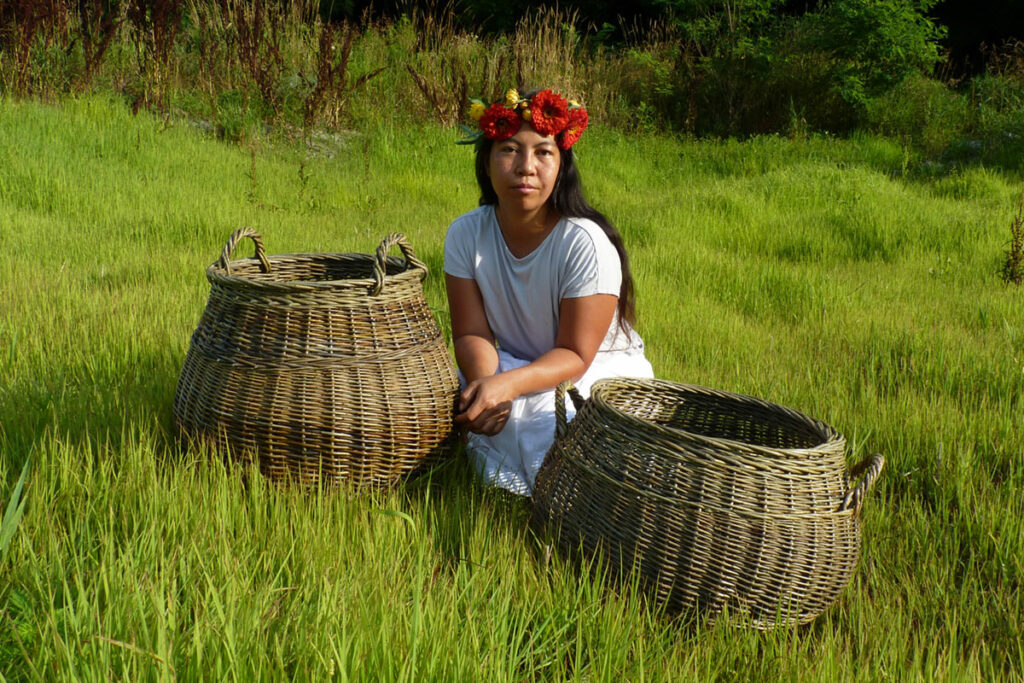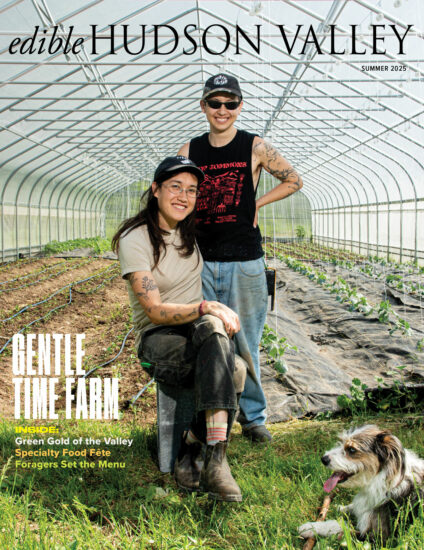A ubiquitous shrub grows in the ditches and marginal lands of New York. At the height of the summer, you’d never know it was there, blending into the wild boundaries of old farms and meadows. But in the earliest part of spring, when nearly all else still sleeps, a show of fluffy catkins, dusted with golden pollen and vibrating with grateful bees, announces its presence to us.
Willow, or the genus Salix, grows worldwide with over 350 species. It will sometimes present in the form of a tree, but more often as a plain-looking shrub. Though not considered showy, you’ll rarely find a plant as useful, vigorous, and with such a tenacious will to live.
Willow happily makes its home in a crucible of wet, heavy soils, soaking up excess water, loosening the earth with powerful roots and making it more habitable to
other forms of life. When willow is cut down to the ground, it regenerates quickly, growing larger and branchier than before. That willow grows in this way is precisely
why it has been used for ages as a choice material in the historically rich craft of weaving.

In Europe, willow basketry has maintained cultural relevance. Due to heightened interest in traditional craft with a helpful boost from social media, weaving
communities abroad and in the U.S. have grown. New York–based weavers Jes Clark and Sandra Kehoe now find themselves in significant demand for the skills
they honed as a sideline to their careers, unexpectedly becoming weavers and willow growers.
Not long ago, Jes Clark of Willow Vale Farm was a vegetable grower. Their farm was once adorned with the pin-tight rows of greens and herbs that hinted at a love of precision and technical proficiency that Jes now demonstrates as a weaver. Jes came to willow-craft during their time as a grower at the agricultural collective Poughkeepsie Farm Project. During a visit to conservation nonprofit Trout Unlimited, they encountered a managed patch of willow; a cultivar named ‘Streamco’, it’s commonly used for riparian buffers, but it’s also an exceptionally good weaver. Their interest piqued, they began teaching themself to weave and a new passion was born.

Many baskets later, at their own farm in Stanfordville, they would slowly relinquish bed space meant for kale and summer squash to larger plantings of willow. “Maybe it’s the frugality I was raised with,” says Jes, “but I loved the idea of growing [my favorite] food because it meant I could have as much as I wanted. I loved the idea of growing this beautiful plant from sticks I nicked from the roadside to make beautiful material that I could weave beautiful baskets from.”
Willow Vale Farm produces a growing percentage of the weaving material they use for classes and for commissions ranging from prop stylists in the city to other weavers. Though Jes grows a significant amount of willow, it still only scratches the surface of what they use for projects and classes. They often still need to source from other growers.
At Willowbrook Basket Farm, farmer and craftsperson Sandra Kehoe has planted over 13,000 stools of willow. Once fully established, they will power all of her own basketry projects and the classes she teaches in the North-east. In the winter, she sells live willow cuttings to aspiring and established growers and hopes to have a
large enough harvest of willow rods each year to sell to other weavers. “After taking a few willow classes, I quickly realized that sourcing the material could be challenging. Unlike in Europe, we don’t have commercial willow growers here. I knew that growing my own willow would be necessary to ensure a reliable supply,” she says.

Sandra’s farm is in the Mohawk Valley. It’s an undulating patch of land in the upper Catskills, arguably not best-suited to vegetable crops. But with a knowing eye, you will see the signs that it is the perfect home for growing willow. In the margins and ditches surrounding her farm, wild willow and osiers spring up from the wet mud, confirming suitability for a basketry farm.
“For me, willow as a material felt accessible,” Sandra explains. “With a small piece of land, sunlight, and water, you can have a consistent source of material for making baskets.”
What all of these growers and makers have in common, and where all this willow-work points to, is a return to something fundamental—an ancient bond between humans and our environment.
Historically, baskets and other woven vessels were essential tools in agricultural communities, helping to transport harvests and even livestock from the fields to homes and to market. In a time when many of the useful objects in our lives come to us from other parts of the world, with no personal connection (and in fact serving to distance us from nature, and each other), weaving goes the other way. With materials found or grown in one’s own backyard, it can be a way to deepen a connection not only to everyday tasks, and the land, but to one’s place in the world.
To view some of Jes’s and Sandra’s work, visit them on Instagram at @willowvalefarm and @willowbrookbasketfarm, respectively.



